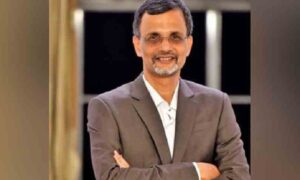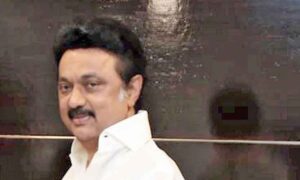
By Supriya Chaudhuri
In a brief essay – written in the form of a letter – prefaced to a book by his colleague John Higgins at the University of Cape Town, the novelist J. M. Coetzee offered a pessimistic coda to Higgins’s powerful appeal for the autonomy of the university and the role of the humanities in fostering “critical literacy.” As Coetzee noted, “All over the world, as governments retreat from their traditional duty to foster the common good and reconceive of themselves as mere managers of national economies, universities have been coming under pressure to turn themselves into training schools equipping young people with the skills required by a modern economy.”
Coetzee’s pessimism is founded on two linked perceptions. In the first place, he has no illusions about “the ideological force driving the assault on the independence of universities in the (broadly conceived) West.” To him this assault, commencing in the 1980s, appeared cynical and coherent: it was directed at neutralizing sites of agitation and dissent, and preventing the dissemination of ideas that might induce young people to question, rather than accept, the social, political and above all economic order. Secondly, he finds that universities have proved reluctant or ill-equipped to protect themselves. “The fact is,” he writes, “that the record of universities, over the past 30 years, in defending themselves against pressure from the state has not been a proud one. Resistance was weak and ill organised; routed, the professors beat a retreat to their dugouts, from where they have done little besides launching the intermittent satirical barb against the managerial newspeak they are perforce having to acquire.”
Coetzee’s gloom has its origin in a genuine crisis, a global shrinkage, if we might call it that, in the philosophical and critical functions of the academy. And as a (retired) professor, permanently confined to a metaphorical dugout, I cannot but share his sense of the actual ineffectiveness of rearguard action on our part. Indeed, the only figure in Coetzee’s later fiction with whom I feel reluctant sympathy – no doubt because of my own subject-position – is the elderly female writer Elizabeth Costello, touring the world to lecture hostile provincial audiences on the lives of animals and the duty of vegetarianism. (By an accident of history, this unpopular subject might receive state patronage in present-day India). For Coetzee, the threat to the academy is not just from the loss or attenuation of traditional disciplines, but from their substitution by ‘skill sets’ which are claimed as transferable even without disciplinary foundation – particularly in the humanities. If universities are doomed to extinction, he argues, it is time for philosophy to be taken out of the academy.
Yet the situation in India appears in some respects the reverse of the global picture. Elsewhere, universities are struggling to sustain programmes and departments in a climate of funding cuts, smaller colleges are closing down, students are crippled by debt and unable to make their degrees count, while in India, both central and state governments periodically announce the creation of new universities and institutes of technology, resolve to increase the gross enrolment ratio, and encourage private and foreign players to enter the market. It might seem, then, that higher education in India is a sector of growth, a site of promise and opportunity, while worldwide, it is in recession. Of course, such a contrast need not actually negate Coetzee’s fears, since these stem not from the physical absence of universities, but rather from a loss of their social and intellectual functions. Unfortunately, even that contrast is more apparent than real.
Even in India, universities – especially public universities – are under threat. Grants did not go up under the 12th Plan; in fact, the higher education budget was cut by over 1500 crores in 2015-16 alone. The University Grants Commission, its existence imperilled by the proposal (still pending) to set up a National Commission for Higher Education and Research which will subsume all earlier regulatory bodies, is moribund, unable to disburse even sanctioned funds. Both UPA and BJP governments announced new IITs and IIMs, in addition to other populist gestures including reviving state universities through RUSA, but in fact, the promised expenditure of 6% of GDP on education was never reached. The new National Education Policy document, still in draft, admits that ‘in recent years [actual expenditure on education] has hovered around 3.5%,’ and despite the Right to Education Act of 2008, India has the largest population of non-literates in the world. The Gross Enrolment Ratio (of students in higher education) is calculated by different government agencies at lows between 14% and 23%, with glaring regional, caste, and community-based disparities. Further, through an imperceptible but momentous shift in the higher education landscape, over 60% of students now study in private institutions (of indifferent merit). Dropout rates among disadvantaged groups remain high, and inclusive education, especially in the private sector, is a myth. Meanwhile, publicly funded institutions – state and central universities – are stretched to breaking point by the pressure to increase intake while simultaneously achieving high levels of innovation and research to propel them up the global rankings. The Draft NEP reiterates the absurd but sinister proposal to institute an Indian Education Service (IES) under the MHRD, from which all academic appointments will be made, while reputed universities will create ‘leadership development centres’ offering short-term managerial courses mandated for all future heads of institutions.
Within this depressing scene of negative aspiration, the ground reality is more depressing still. The unrest on public university campuses over the past couple of years, occasioned by issues of gender, caste and political belief, has brought faculty and students into conflict with an apparently repressive administration openly supported by the government. Many of these issues (especially caste) are not new – indeed they look back to earlier instances treated with equal harshness and indifference by university authorities. Nevertheless, there is a new urgency in the protests, as though faculty and students alike are aware that time is running out, indeed that it may already be too late to voice their anger and despair. And interestingly, both the protest and the repression draw upon two apparently opposed perceptions of the university, seeing it simultaneously as closed and open, as a restricted, bounded space governed by its own laws, and as a domain subject to the laws of the state (including the sedition laws). For those within the academy, the idea of the university was in question: is it a free, protected space of enquiry, dissent, parrhesia – speaking truth to power from relatively neutral ground – or is it no more than a government department?
In an article written around thirty years ago, the philosopher Jürgen Habermas offered a trenchant critique of what he saw as the idealism inherent in Karl Jaspers’s 1923 text, The Idea of the University, revised in 1961. As Habermas pointed out, “the idea of the university” suggests an ideal life-form that can no longer be realistically supposed to exist. “Even disregarding this extravagant claim to exemplary status,” he asks, “isn’t the very premise that a vast and extraordinarily complex structure such as the modern university system be permeated and sustained by a mode of thought shared by all its members, unrealistic in the extreme? Couldn’t Jaspers have learned years earlier from Max Weber that the organizational reality into which the functionally specified subsystems of a highly differentiated society imbed themselves rests on wholly different premises? The functional capability of such institutions depends precisely on a detachment of their members’ motivations from the goals and functions of the organization. Organizations no longer embody ideas.”
Can the modern university still claim to be animated by an idea, or ideal? Is there, within functions and specializations, a collective consciousness, a “shared self-understanding of the university’s members”? Habermas is not convinced. Ideas come and go, he says, and it is impossible – even undesirable – that all of the university’s members should share a “normative self-image.” What he hopes for, by contrast (and here we are on the familiar Habermasian ground), is that they should share a belief in the communicative or discursive forms of scientific argument that hold learning processes together. “The doors stand open,” he says, “and at any moment a new face can suddenly appear, a new idea can unexpectedly arrive.” Yet he is anxious to avoid “stylizing” the work of a “community of investigators” as something exemplary. “The egalitarian and universalistic content of their forms of argumentation expresses only the norms of scientific discourse, not those of society as a whole.” Despite the caution here, we cannot miss Habermas’ faith in the communicative process and the life of argument and reason. How would we like to associate these processes with the emergence of the modern university in India?
That emergence, from the nineteenth century onwards, was driven by three factors: colonial educational policy, nationalist experimentation, and the patronage system of old and new philanthropy. In this, it was perfectly representative of India’s own uneasy transition to a ‘modernity’ whose nature is still in question – based, as it was, on a traumatic loss of the past. The process did, in fact, produce interventions in the public sphere, though with varying degrees of success. In some cases, they were led by charismatic figures whose presence in the university drew it into the urgency of the historical moment. In other cases – such as that of Tagore’s Visva Bharati – ‘modern’ higher education was itself under attack. Subsequent to independence, however, access to state funding and the promulgation of various University Acts tended to erase what was distinctive about each institution, to increase its dependence upon the public exchequer (whether state or central) and to encourage subservience to bureaucratic control by government. Universities were actively discouraged from raising funds from the public or from other sources (despite having been set up through public donations), forced to maintain fees at a level so low that state subsidy was imperative, and compelled to focus on degree-granting to the exclusion of infrastructure, libraries, research, and social commitments, even direct involvement, of other kinds. Many of these legitimate interests were absorbed by newly founded research institutes and by government departments, or delinked from the state-funded programmes of the university and left to survive on their own.
Yet despite the constraints imposed by an unimaginative bureaucracy, limited funding, decaying infrastructure, and an attenuated research climate, the public universities of India, in the decades after independence, emerged as the first free, democratic, and secular space where all classes of Indians could meet and interact. It is true of course that there were still monstrous inequalities in access to education at the primary and secondary levels, and literacy rates were low, so only a tiny proportion of the country’s population could reach university at all. Yet while differences rapidly multiplied at the school level, and the gap between state and private (or trust-funded) schools instituted itself so permanently that within a generation the aspiring middle-class was sending its children to private schools to receive English-language education rather than in the vernacular, there was no alternative – except for the very rich – to the public university, which received students from both systems, private and state. For all its physical limitations, therefore, the university was a place of excitement, energy, intellectual sophistication, and – perhaps most importantly – direct contact with social reality. My own experience at Presidency College during 1969-72, during the last, bitter flourish of the Naxalite movement, with the idea of higher education itself under attack from Maoist theoreticians, certainly instilled in me an abiding respect for teachers and fellow-students who taught me as much about the life of the mind as they did about the need to put our convictions to test in our daily practice.
All of us will recognize that we are today almost at the limit of that period in the life of the public university in India, a period marked by academic rigidity and inflexibility, bureaucratic narrow-mindedness, student indiscipline, faculty politics, and campus decay, but also a period of democracy by default, as it were – a period when some remarkable achievements were made possible by the simple chemistry of contact and by a merit-driven (however narrowly merit was defined) academic system. And we can see that that system, those contact zones, have been stretched to impossible limits by the inequalities that have persisted in society at large – between rural and urban, rich and poor, oppressed and privileged, women and men, linguistically empowered or disempowered. Perhaps, if we look back at this history from a later perspective, we will see the Right to Education Act, enacted after such shameful delay in 2008, as the final nail in the coffin of a public education system that should legitimately have answered to the aspirations of those who had newly received education from the state itself.
This is a paradox and for me a deeply painful one. On the one hand there is the necessary commitment to higher education, at public cost, for the huge mass of learners; on the other, there is the apparent breakdown of the existing system and the possibly unchecked entry of all kinds of new players (private, corporate, foreign) into a higher education landscape that will soon show exactly those divisions that trouble us with respect to school education. And it is for this reason that I think that the silence of the academy – and by the academy I mean our still dominant public higher education institutions – about the university’s role in society must be counted as its worst failure, over and above the systemic defects we can all recognize.
The bureaucratization and impoverishment of the public university were, of course, a good way of focusing the attention of the faculty on their salaries, students on their degrees, and society on employment. If students and teachers were enlisted for larger social causes, these causes were most often determined by political parties rather than by any independent judgment emanating from within the academic community. I have witnessed no agitations more urgent than those involving pay or arrears. But surely we cannot blame economics, or politics, or bureaucracy, or our other vexations, for a failure that is primarily our own. If our university life gave us nothing else, it gave us, perhaps uniquely, a space of encounter, conflict, socialization, speech. In its extreme state that speech might take the form of parrhesia, the will to speak truth to power. Individual plain speaking is not unknown in the Indian academy, but it has seldom emerged as a collective practice. The space of the parrhesiastes has been taken over by forms of demagoguery or canvassing that serve the specific interests of political parties. It might seem naïve even to imagine any alternative to this state of affairs, given the subservience of employees to their political masters in the “subsistence” economy of higher education in India. (Such subservience is, of course, equally characteristic of the more prosperous educational economy of the West, China or Japan.)
But the fact that we are ultimately funded by ordinary taxpayers to whose ranks we also belong imposes upon us a certain moral responsibility, and perhaps a freedom that can be claimed even if it cannot be ensured. In some ways, our fractured, unequal and impoverished social reality is our only safeguard against “managerial newspeak” on the one hand and political slavery on the other. Forced to contend every day with the conflicts and injustices of our social existence, we might want to re-think the public university as public space, perhaps the only kind we have. It is a space that does not allow us to think of the life of the mind separately from other life-worlds: it compels us, instead, to understand that the “idea of the university” is only a placeholder for the still-important function of intellectual labour in a democratic society. I do not want to suggest that such labour is only, or at a public university, primarily, a form of social engagement. I have myself spent more than half my life in public institutions pursuing recondite (“socially unproductive”) kinds of research, and teaching the literature of the past. But by a paradox easily appreciated by others who have done the same, I have felt less threatened, more justified, in being paid out of our taxes to foster the humanities as a public good, just as education too is a public good. It is in the public university, not in a private institute, that we can claim knowledge, and its dissemination, as a common good: that we can, in effect,givese shape to what we might call the knowledge commons. It is on such “commons” – in the digital realm, in public archives, in public teaching institutions – that the life of our democracy depends.
Photo: Debaditya Bhattacharya
Bio:
Supriya Chaudhuri is Professor (Emerita) in the Department of English, Jadavpur University, Kolkata.
The article first published by Cafe Dissensus. To read the original article click Here


















